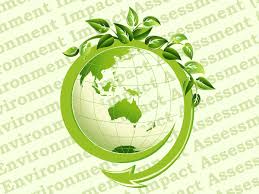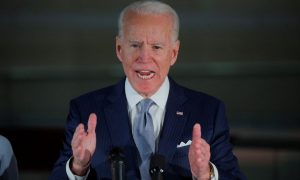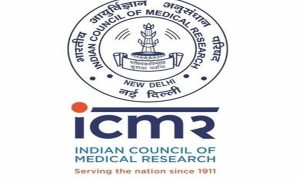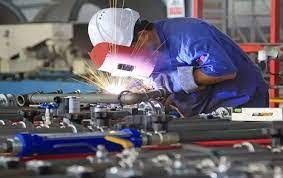Hello friends good morning. A few days back there were articles about the EIA 2020 with several knowingly or unknowingly were terming this as regressive and the same is to be scrapped. While I had covered an article in IndSamachar Webnews & had shared my opinions to Swarajya web news as well the very next day with a neutral unbiased view. I found it strange that despite being fairly knowledgeable otherwise in the web media were unduly creating a little unwanted fear in the minds of people by terming this act as totally regressive and would bring the down fall of the environment all over the country with hardships to local farmers. Unfortunately, the distress messages from the people of normal walk were either instigated or due to lack of understanding. I have to agree that the establishment at the center has not risen to the occasion to clear the misnomer of the overall perception and awareness. It is indeed somewhat complex to understand for a normal well-educated person as well as this topic of environment is an in-depth topic.
I am today trying to cover a slightly in-depth analysis of what this EIA 2020 act means per say in the draft, and analysing whether the following major fears or allegations levelled against the said act is really a matter of concern as expressed by certain celebrities as well. This could be due to the fact that any Government draft document runs to several pages and are to be read carefully integrating one page with another relevant one to arrive at the nett effect. While a ruling government can say the new enactment draft is better than the previous one, the opposition might as well as junk it saying the benefits derived from the earlier enactments proposed by the older ones, ie when the opposition was ruling was a much better one and the current draft compromised peoples interest and such an amendment is going to be very bad to the people. Without going into the political brownie points the ruling and opposition are charging against each other I am trying to dispassionately analyse the drat EIA 2020 as the a stance as it merits, and therefore keeping politics away.
Let us now come to the allegations:
The following major allegations have surfaced as per the perception by reading the documents in parts or not integrating the relevant counter sections of the long 83-page document.
Allegation 1: This new EIA 2020 is bad for farmers and would make the
agricultural land into a desert.
Allegation 2: EIA is no longer mandatory for new projects, and any body and everyone can start a project with scant respect for environment and people’s safety.
Allegation 3: There will not be any public hearing for projects that are going to be implemented in the country hence forth. Even if a public hearing is insisted upon the duration of the same is drastically reduced.
Allegation 4: Making complaint by public or by social activists will no longer be possible regarding an upcoming project.
Allegation 5: The number and frequency of information or reports regarding the functioning and day to day violations of a project is kept secret from the public and the same is known only to its developers or agencies under control of the ruling government. The penalty if any to be levied on violation is negligible and is favouring the investor of the project, that he hardly feels it for the nature of violation if any.
Allegation 6: EIA is not required for widening or construction of roads, and
hence this would pave way for land acquisition without any public hearing.
Allegation 7: It is against the federal principles by curtailing the interests of the States
Before I try to address the allegations levelled on the 83-page document. It is necessary to understand the scenario in which this EIA 2020 draft has been notified.
Page 1, 2 of page 83 in the opening statements addresses the concern
expresses of the Jharkhand High Court observations in 2014 of the petitioner Hindustan Copper a public sector undertaking the said notification defined violation of projects which have started the construction work & have sought measures of remedial actions from the
government of exploring ratifications. The union government therefore came measures to address these issues and come out with regard to prior and post defacto Environmental clearances as deemed fit. the Central Government hereby publishes this draft notification in exercise of the powers conferred by sub-section (1) and clause (v) of subsection (2) of
section 3 and section 23 of the Environment (Protection) Act, 1986, read with clause (d) of sub-rule (3) or rule 5 of the Environment (Protection) Rules, 1986 and in supersession of the notification number S.O. 1533 (E) dated the 14th September, 2006 read with subsequent amendments, notification numbers S.O. 190 (E) dated the 20th January, 2016, S.O. 4307(E)
dated the 29th November, 2019, S.O. 750(E) dated the 17th February, 2020,
except in respect of things done or omitted to be done before such supersession.
So prima facie this 2020 notification is addressing the concerns of already existing projects where EIA have either not been properly done or found to have violations post commercial operations. One of the arguments against the draft EIA 2020 notification is the opponents claim that is that a project can begin operation without environment clearance and then seek post-facto approval is therefore incorrect as this is only a corrective action suggested to existing non-compliant industries as otherwise the number of people loosing jobs due to such closures and their livelihood would be at stake. It is a classical case of lives Vs livelihood which needs a fine balance. This is attempted to be resolved by addressing the redefinition of certain inclusions but very well defined mitigatory procedures with a classification of EIA that would fall under three classifications namely A, B1 & B2. All the categories of industries are covered with additions as required of the EIA 2006. The categories A & B1 still requires EIA for the purposes of an environmental clearance and follows the same protocols as in EIA 2006. The category B2 however seems to be exempted but then this list mainly covers smaller industries or clusters from MSME’s or non-invasive projects of the environment.
Those campaigning against the 2020 draft notification claim that this will regularise the operations a person who violates environmental laws and thus endanger the environment. Experts point out that there is an attempt to mislead people as this will not be applicable for new projects or industries And no new project can seek postfacto approval. Nothing stated in EIA 2020 draft therefore concerns about agriculture being affected and the countries agricultural land will be converted into a desert as alleged in Allegation 1.
Allegation 2: “ EIA is not mandatory for new projects and any one can start
any project anywhere with scant respect for environment”. This is again a
misnomer as the act specifies the need for projects to have mandatory EIA in accordance with 2006 EIA notifications. The same rule that was there in 2006 continues. Under the present Act as well, a unit operating this can be asked to be shut. The draft notification says that the impact of the unit on the environment will be assessed first to decide on whether it should continue operation even as it functions. A typical classification of projects are industries which are exempt from EIA is listed as under:
The following cases shall not require prior-EC or prior-EP, namely:- as referred in page 33 -38 of page 83.
(1) Extraction of ordinary clay or sand by manual mining, by the Kumhars
(Potter) to prepare earthen pots, lamp, toys, etc. as per their customs;
(2) Extraction of ordinary clay or sand by manual mining, by earthen tile
makers who prepare earthen tiles;
(3) Removal of sand deposits on agricultural field after flood by farmers;
(4) Customary extraction of sand and ordinary earth from sources situated in Gram Panchayat for personal use or community work in village.
5.Community works like de-silting of village ponds or tanks, construction of
village roads, ponds, bunds undertaken in Mahatma Gandhi National Rural
Employment and Guarantee Schemes, other Government sponsored schemes, and community efforts;
(6) Extraction or sourcing or borrowing of ordinary earth for the linear projects such as roads, pipelines, etc.
(7) Dredging and de-silting of dams, reservoirs, weirs, barrages, river, and
canals for the purpose of their maintenance, upkeep and disaster management;
(8) Traditional occupational work of sand by Vanjara and Oads in Gujarat vide notification number GU/90(16)/MCR-2189(68)/5-CHH, dated the 14th
February, 1990 of the Government of Gujarat.
(9) Manual extraction of Lime shells (dead shell), shrines, etc., within inter tidal zone by the traditional community.
(10) Digging of well for irrigation or drinking water purpose.
(11) Digging of foundation for buildings, not requiring prior-EC or prior-EP, as the case non-toxic, involving furnaces such as Induction Furnace or Electric Arc Furnace or Submerged Arc Furnace or other gas-based furnaces, with capacity up to 1,00,000 ton per annum.
(b) non-toxic, involving furnaces such as cupola and other furnaces using coal or briquettes with capacity up to 60,000 ton per annum.
(c) re-cycling units registered under Hazardous and Other Waste Rules, 2016.
(25) Stand-alone re-rolling mills,-
(a) involving pickling operation with a capacity up to 1, 00, 000 ton per annum.
(b) not involving pickling operation with a capacity up to 2, 00, 000 ton per
annum.
(c) not involving pickling and no requirement of fuel for re-heating.
(26) Change in product mix for Ordinary Portland Cement (OPC), Portland
Pozzolana Cement (PPC), Portland Slag Cement (PSC), Masonry cement or any other type of cement within the sanctioned capacity of conditions of prior-EC.
(27) Stand-alone projects for melting of ‘coal tar pitch’;
(28) Stand-alone Granulation of single super phosphate powder.
(29) Neem coating of fertilizers or fortification of fertilizers, provided that the total production does not exceed the sanctioned capacity of prior-EC plus the weight of the coating or fortification material used.
(30) Processing of paraffin wax. (31) Extraction of Alkaloid from Opium.
(32) Manufacturing of products from polymer granules or manmade fibers
from granules
or flakes or chips.
(33) Manufacturing of Linear Alkyl Benzene Sulphonic Acid (LABSA) from LAB;
(34) Country Liquor (e.g. based on Mahuwa flower, Cashew, etc.) units up to
capacity of 10 KL/Day
However almost all projects listed in A, B1 and B2 still requires prior
environment permission a new additional value-added inclusion, and this is no matter whether EIA is required or exempted in B2. Page 37 of 83 clearly explains this requirement.
Allegation 3 & 4 regarding public hearing: Applicable for all classification of
projects as according to EIA 2006, excepting category B2 as discussed earlier. As a matter of fact projects which require correction for EIA where the project has already started. will have an internal scrutiny of expert
committee and the project developer will also discuss the previous
complaints raised earlier and complained by public or other social activists
and the expert committee or project developer will give the compliance
schedule to the relevant State and Central authorities. The procedures for
various public hearings are listed in page 46 of 83. Therefore unwanted
frenzy is to be avoided especially considering the tremendous development
that has taken place in the information and technology sector. Many
meetings would take place with some in personal and some in virtual mode,
as this involves coordination with several agencies. The idea is not to avoid
but to cut short non connected discussions, and motivate such meetings are
attended without fail, and seeking extension of time and its duration. The
idea is to make effective communication in lesser span of time, without
dragging the issue.
(1) Public Hearing:
1.1 The Public Hearing shall be arranged in a systematic, time bound and
transparent manner ensuring widest possible public participation at the project site(s) or in its close proximity District -wise, by the concerned State Pollution Control Board (SPCB) or the Union Territory Pollution Control Committee (UTPCC)
(2) Process 2.1 The project proponent shall arrange to forward copies, one hard and one soft, of the draft EIA Report along with the Summary EIA, simultaneously with application for conduct of public hearing, to the following authorities or offices, within whose jurisdiction the project
will be located:
(a) District Magistrate / District Collector / Deputy Commissioner/s;
(b) Zila Parishad or Municipal Corporation or Panchayats Union;
(c) District Industries Office;
(d) Urban Local Bodies (ULBs) / PRIs concerned / Development authorities;
(e) Concerned Regional Office of the Ministry;
(f) Concerned Regional office of SPCB or UTPCC.
Provided that the period within which public hearing ought to be conducted as per the sub-clause (5) of clause 14 of this notification shall commence from the latest date when the project proponent submits copies of requisite documents to all the above authorities.
2.2 On receiving the draft EIA report, the above-mentioned authorities, shall
make the same available for inspection, electronically or otherwise, to the public during normal office hours till the Public Hearing is over.
2.3 SPCB or UTPCC shall ensure that the draft EIA Report has been prepared in accordance with the ToR, prescribed by the Regulatory Authority. No
additional studies shall be sought by the SPCB or UTPCC beyond the ToR prescribed by the Regulatory Authority 2.4 The SPCB or UTPCC concerned shall also make similar arrangements for giving publicity about the project within the State or Union Territory and make available the Summary of the draft EIA Report for inspection in select offices or public libraries or any
other suitable locations etc. They shall also additionally make available a copy of the draft EIA Report to the above five authorities or offices as given in sub-clause 2.2 above 2.5 The SPCB or UTPCC concerned shall decide, from the documents or otherwise whether the public hearing is required to be conducted at any additional or alternative places.
Allegation 5- Lack of transparency of EMP, periodicity, low penalties:
This again is a myth as EIA 2020 clearly states the need for transparency of
EMP which is in line with EIA 2006. It is only the availability of such reports
directly to public or social activists from the project developer. This in most
cases would be for industries who had already commenced operations with a defective EIA. What is being suggested is a risk mitigation plan with a tighter level of monitoring. Besides local pollution control boards, district collectors and inspector of factories are free to make surprise checks as need be.
Page 59 of 83 covers the scope as under, Environment Management Plan
The Environment Management Plan would consist of all mitigation measures for each item wise activity to be undertaken during the construction, operation and the entire life cycle to minimize adverse
environmental impacts as a result of the activities of the project. It would also delineate the environmental monitoring plan for compliance of various environmental regulations. It will state the steps to be taken in
case of emergency such as accidents at the site including fire.
11 Attachments:
A Panoramic view of the project site and the vicinity
B Site location
C surrounding features of the proposed site (within 500 meters) D Site (indicating levels & contours) to appropriate scales. (If not available
attach only conceptual plans)
Allegation 6—roads are exempted from EIA. Again this is a myth as this is
applicable for roads within 100 Kms from the countries border and for
defence purposes and not for all cases. Certain classifications such as
widening of roads in road plaza area up to about 70 m however comes under classification B2 where no EIA is required but would require a prior
permission or clearance as listed in page 37 of 83.
Allegation 7—Against the federal interest of the States:– As this could be
seen in the earlier response to allegation on public hearing the responsibility and involvement matrix of experts and bureaucrats starts from the District level, State, Regional and Center judiciously represented including their eligibility( a new addition in EIA 2020) to constitute to such panels and therefore unfounded.
Does this mean there are no concerns or no voices to be expressed for a
counter view?
No. Not at all. Some are listed as under to raise a pertinent question. You
can add others objectively.
• What is the time frame available for response to the notification?
• Can it be extended considering the pandemic COVID situation although
the response could have been initiated electronically by email.
• How are concerns that are going to be addressed by the Government in
addition to what I have listed as allegations 1-7.
• What are the EMP advancements that are going to be followed as a
technology innovation with minimum human intervention. For
example, some well-established factories have online modem that
could be connected to pollution control authorities at the District &
State level for monitoring 24 x 7 air, water, noise quality.
• What technological developments like ZLD (Zero Liquid Discharge) are
special features with minimum human interference and how tamper
proof are they. • Clarity with regard to building construction and real estates for the
issues cited in EIA 2020.
• Instead of taking contention to the fact that earlier notification in 2006
was issued only in English & Hindi the ruling government has to issue
the translated version in all Indian official languages. Having said the
same, the opposition parties have also slept over such an important
issue when the official notification came around mid-March 2020, and
appear not to have brought any concerns over the media but instead
started playing COVID politics. Agreed COVID is an important matter
concerning public and would go on for a while till a suitable vaccine is
found.
• Let people participate and debate for clarity instead of coming up with
one liners such as “Useless & harmful” OR “Excellent & Innovative”

About Author

Mr. Kumar Sarangapani, Managing Partner Varaha Pipeline Engineering & Business Solutions LLP & Marine Specialist Project Consultant (RO) for community plants developed by Government Projects in Tamilnadu, Andra Pradesh, Maharashtra & Gujarat.
Kumar is”chemical engineer with about 40 years of experience.
Twitter- KumarSarangapa1




























 WhatsApp us
WhatsApp us
Pingback: แทงบอล lsm99
Pingback: Tiktok